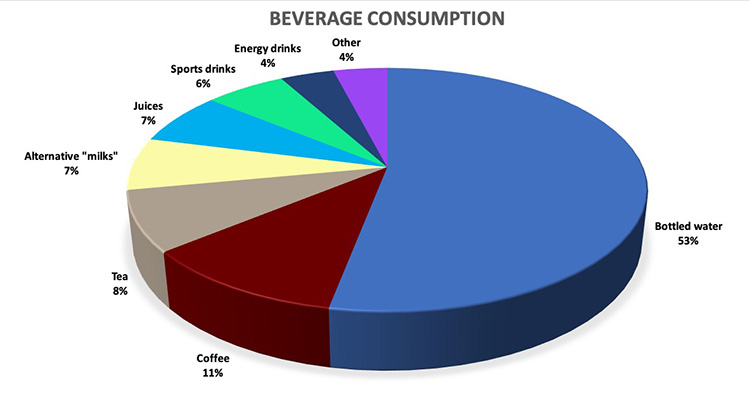
Trends in consumer reporting have shown that people are drinking less fluid milk each year. It’s something dairy farmers are acutely aware of even as we acknowledge Americans are eating more dairy products in the form of cheese, butter, and yogurt to name a few.
In 2018, Americans purchased 3.62 billion gallons of fluid milk, which was off 2.8% from 2017 levels. With that knowledge in mind, Dairy Farmers of Wisconsin’s Jen Walsh introduced her presentation at the Dairy Strong Conference in January.
“Fluid milk is often looked at with doom and gloom, but don’t miss the forest for the trees,” she encouraged while listing many bright spots in fluid milk sales such as the lactose-free market, A2 category, and local milk processing.
Milk sales down, water up
In discussing additional milk sale trends, Walsh showed data tracking buyer migration. Many households haven’t eliminated milk wholly from their refrigerators but backed down in the amount of milk they purchase.
What are they consuming instead?
Citing research from the IRI National Consumer Panel in 2017, Walsh explained that the lost volume of white milk was primarily replaced by bottled water purchases. All the value replacements are shown in the graph.

Sustainability drives consumers
“It doesn’t matter what’s true; it matters what consumers perceive as true,” Walsh emphasized. And in her research, sustainability is not an issue that’s going away in the minds of consumers.
The opportunity that exists in Walsh’s eyes is to help shape what sustainability means. “We can’t ignore this preference of consumers. Taste will always be important, convenience and price, too, but we have to address sustainability,” Walsh said.
“Consumers don’t know what sustainability means to them. We can help them define it,” she continued. “If produced in a sustainable way, consumers are more likely to consider the product more nutritious. They think ‘If it’s better for the planet, it’s better for me.’”








